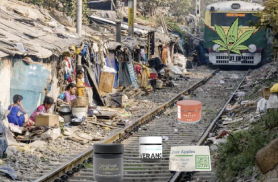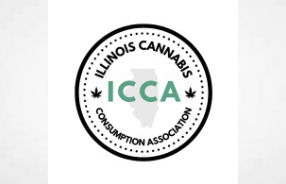By Charlie Alovisetti, Juliana Todeschi
Jan 7, 2025
Kratom is a growing, billion-dollar industry in the United States. However, the legal landscape for kratom in the U.S. is complex and rapidly evolving. This article examines the current federal and state approaches to Kratom regulation and offers insights for operating in this high-risk space.
What is Kratom and How is it Used?
Kratom (Mitragyna speciosa) is a tropical evergreen tree native to Southeast Asia, belonging to the coffee family (Rubiaceae). Its leaves have a variety of alkaloids that are responsible for their psychoactive effects. These compounds interact with opioid receptors in the brain, producing effects that can range from stimulant-like at low doses to sedative and pain-relieving at higher doses.
Kratom has been traditionally used in countries like Thailand and Malaysia, as well as throughout Africa, for centuries as a natural remedy for various ailments, including pain, anxiety, and fatigue. Kratom has also been used during religious ceremonies.
Kratom can be consumed in numerous formats: The leaves can be chewed fresh, dried, crushed into a powder for smoking or oral consumption (as is common in modern supplements), or brewed into tea. Recently, kratom has gained attention in the United States, given its pain management qualities that can serve as a substitute for traditional opiates and its rampant availability at convenience stores, gas stations, and online.
What is the Kratom Controversy? Advocates vs Critics
The debate surrounding kratom pits advocates who tout its potential benefits against critics who warn of its risks. Proponents argue that kratom offers pain relief, mood enhancement, and aid in opioid withdrawal, with some users reporting improved quality of life and reduced dependence on traditional pharmaceuticals, such as opiates. Additionally, kratom has had a long history of conventional use in Southeast Asia, and Thai scientists who study the plant do not understand the controversy surrounding its use.
However, others will point to kratom as a substitute for opiates rather than a safe alternative to their use. Opponents, including the U.S. Food and Drug Administration (FDA), emphasize the lack of clinical trials proving kratom’s efficacy and safety, warning of its potential for addiction, abuse, and adverse effects such as liver damage and seizures. Critics also highlight concerns about interactions with other drugs.
How is Kratom Regulated?
Kratom is not federally regulated and does not appear in the federal Controlled Substances Act (CSA). While the substance does not appear on the CSA, the U.S. Drug Enforcement Agency (DEA) has formally listed kratom as a “Drug and Chemical of Concern,” and the FDA deters consumers from its use, citing a risk of serious adverse events, including liver toxicity, seizures, and substance use disorder. In the absence of federal regulations, many states and localities have opted to regulate kratom in some capacity.
Kratom and the Controlled Substances Act
At the federal level, kratom is not scheduled under CSA, which typically governs the regulation of psychoactive substances. In recent years, there have been several attempts to schedule kratom. In August 2016, the DEA announced its intention to temporarily classify kratom as a Schedule I substance, citing concerns about its potential for abuse and public safety risks. However, this decision faced significant public backlash, including demonstrations, petitions, lawsuits, and congressional opposition. As a result, the DEA withdrew its notice of intent in October 2016 and opened a period for public comment. Since then, the FDA has made multiple attempts to have kratom’s active compounds scheduled, but the DEA, the Department of Health and Human Services, and the Expert Committee on Drug Dependence for the U.N. Commission on Narcotic Drugs have rejected these recommendations. As of the date of this publication, kratom remains unscheduled under the CSA.
Kratom and the Federal Food Drugs & Cosmetics Act
Despite the absence of changes to the scheduling of kratom, its unrestricted sales and marketing remain illegal. The FDA has taken a firm stance, declaring kratom an unapproved new dietary ingredient. This position effectively prohibits marketing kratom as a nutritional supplement or food additive in the U.S., and the FDA states, “kratom is not lawfully marketed in the U.S. as a drug product, a dietary supplement, or a food additive in conventional food.” The FDA’s concerns have led to import alerts and seizures of both imported and domestically manufactured kratom products. The FDA’s clear position is that the inclusion of kratom in a dietary supplement would make the product “adulterated” under the Federal Food, Drugs & Cosmetics Act (an offense with both civil and criminal penalties—though rarely enforced).
State and Local Kratom Regulations
Given the lack of federal oversight of kratom, states have taken up the issue. As of February 2024, 22 states and the District of Columbia regulate kratom in some capacity. Six states and D.C. list kratom’s psychoactive components as controlled substances, and the other sixteen states regulate kratom products. The remaining states neither explicitly control nor regulate kratom, creating a patchwork of legal environments across the country. State regulations vary widely, covering age restrictions, marketing limitations, product quality standards, and taxation. In addition, some localities, such as San Diego, have outright banned kratom.
Looking Ahead
The FDA is actively working to limit kratom availability in the U.S. by warning consumers about its risks, taking action against companies selling unapproved kratom products, and collaborating with other federal agencies to restrict its importation and distribution. However, the agency faces significant challenges in regulating kratom due to the complex and fragmented supply chain, which often involves unregistered entities operating through various channels, including online sales and small retail shops. Given the size of the kratom market, as well as its easy availability, the FDA has been unable to limit kratom’s availability, and state markets continue to grow due to public support for its use.
Additionally, while the FDA takes the position that kratom is an unapproved new dietary ingredient, it ultimately punts jurisdiction to state health and local law enforcement agencies regarding the legality of hemp products.
Given the complex regulatory framework governing kratom products in the United States, it is essential to stay current with the evolving landscape of kratom products before engaging in the business of manufacturing or selling such products.
Contact the regulatory team at Vicente LLP for assistance in navigating the kratom legal landscape in the United States.
The content and links provided on this page are for informational purposes only and not for the purpose of providing legal or tax advice. Viewing this page does not establish an attorney-client relationship. You should consult with a qualified legal professional for advice regarding any particular issue or problem. The contents of this page may be considered attorney advertising under certain rules of professional conduct.


















